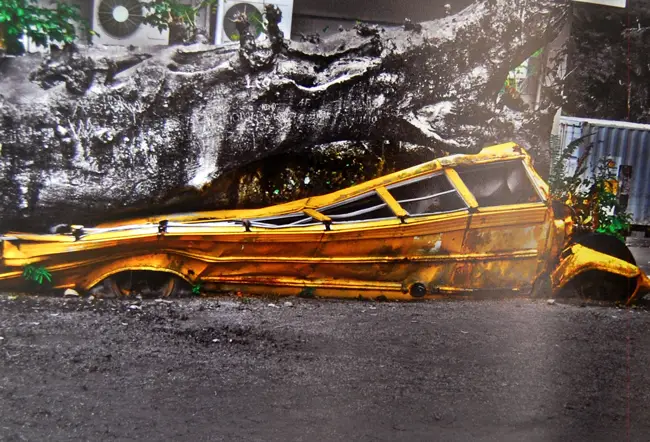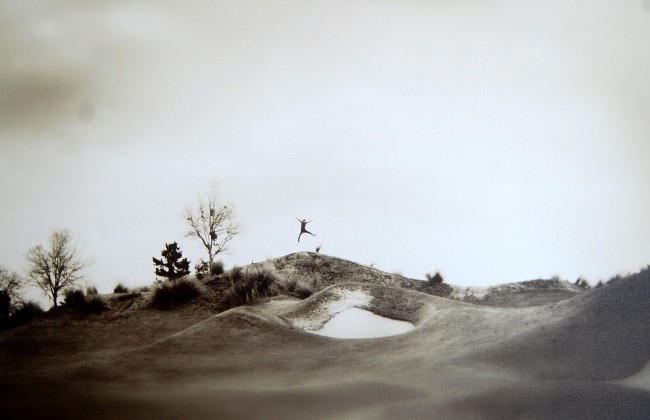
Floridians know about starving the arts. Last spring, when then-Gov. Charlie Crist signed the current $70.4 billion budget into law, he all but eliminated funding for the arts. What, as recently as 2007, was a generous state budget of $32.2 million for arts and cultural agencies has dwindled to a nominal $1 million, ranking Florida near the bottom in the nation in per-capita spending on the arts.
Click On:
- John F. Kennedy’s Speech on the Arts (1963)
- Cultural Development Richer Than Economic: How to Grow Palm Coast Into a City With Soul
- Bucking Long-Range Goals, Palm Coast Again Scales Back Cultural Arts Grants Funding
- How A Panther Broadened City Beauty Board’s Mission to Include Riches & Perils of Public Art
- Palm Coast’s SoHo: Secca Tree Studios Double Hollingsworth Gallery’s Arts Empire
Funding for the arts hasn’t been much of an issue this year in the Legislature because there’s no funding to cut. What public arts funding Florida gets for its non-profits and schools is now almost entirely covered either by federal funds, through the National Endowment for the Arts, or by local governments. In Flagler County, local governments—cities or the county—have relatively small arts budgets. Palm Coast scaled back its arts grants to $20,000 this year, or less than 0.1 percent of the budget. Bunnell and Flagler Beach have no arts and culture budget.
Flagler County doesn’t spend general fund dollars on culture or the arts. It does spend considerably more than Palm Coast on arts and culture through the county Tourist Development Council, which generates public dollars through the 4 percent bed tax. The council’s grants range from a few thousand dollars to $10,000 apiece, and help underwrite cultural festival, scholarly gatherings, performances at the Flagler Auditorium and the Flagler County Art League’s recent spring festival. Those dollars are, if anything, increasing, thanks to the council increasing the bed tax from 3 to 4 percent last year, the result of a push by Milissa Holland, the county commissioner who chairs the tourist council, to market the county as a destination for cultural as well as ecological tourism. But if it weren’t for the council, and the school district’s support of the auditorium and other arts programs within its schools, there would be virtually no publicly supported arts and culture in the county.
In some ways, the local private-sector art scene is thriving. But that’s in relation to a dearth of arts until recently: what art scene exists is still in its infancy. And the arts are under siege in schools and universities, which rely on government funding to keep their programs going—and on the National Endowment for the Arts in particular: almost half the NEA’s budget is distributed to the states in grants that trickle down to schools, colleges and local communities.
This year, for example, the Atlantic Center for the Arts in new Smyrna Beach got a $40,000 grant to support residencies for young and mid-career artists working ion the visual arts, literature, music and acting. Jacksonville’s Aurora Black Arts Festival–produced by the Stage Aurora Theatrical Company–got a $10,000 grant to stage A Rose Among Thorns, a one-woman show written and performed by actress Ella Joyce. (The play is scheduled for July 22-24). In all this year, Florida got 21 individual grants worth a total of $497,000.
That, too, may be in jeopardy.
Established in 1965 by Congress with the support of President Johnson, the NEA is the chronically maligned federal agency Republicans have tried to eliminate periodically since the early 1980s, beginning with Ronald Reagan. The NEA received $155 million in federal dollars in 2009, considerably less, especially in inflation-adjusted dollars, than what the $170 million a year the agency received in the mid-1980s (the equivalent of $350 million in today’s dollars. The NEA received a one-time additional federal grant of $50 million in 2009, as part of the stimulus package.)
The requested allocation for 2012: $167.5 million.
With the House of Representatives again in Republican hands, the NEA is on the defensive as Congress looks to cut spending, or eliminate it altogether.
On April 5, Kevin Spacey and Alec Baldwin were scheduled to appear before a U.S. House subcommittee to speak on behalf of arts funding and the National Endowment for the Arts. They didn’t make it: the hearing was cancelled in anticipation of the government shutdown that never took place. (Another hearing is scheduled for early May.)
Baldwin and Spacey presented most of their testimonies to an audience in a caucus room on Capitol Hill anyway (“my imaginary subcommittee,” as Spacey called it), in what turned into a day of advocacy for public art, art in education and the notion of government support for the arts. Their words echoed John Kennedy’s, in 1963, when he told an Amherst College audience: “I see little of more importance to the future of our country and our civilization than full recognition of the place of the artist.” (Watch the full videos of the speeches below the text.)
Kevin Spacey on the Arts[media id=192 width=400 height=300]
Spacey explained why an NEA grant has influence disproportionate to other types of arts grants: “An NEA grant gives an arts organization in the United States a highly leverageable stamp of approval,” Spacey said. “It means that an organization can go talk to business groups and corporations and individuals and patrons about supporting their efforts. It means that the hours that an organization spends filling out the detailed grant applications are actually worth it. The ideas and plans that you’ve assembled for your production have been recognized as a considerable contribution to the community in which you live. And so to me, an NEA grant isn’t about the art itself. It’s about the country. Our country. This country sending the elevator back down. Those are the ideas that build businesses, leverage dollars, provide jobs and create something meaningful that improves the lives of so many citizens in this country. And let me conclude my remarks in front of my imaginary subcommittee, to thank you for your work and certainly those in this room today on behalf of the NEA and your support of the arts. I know, and I’ve certainly heard, that these are challenging times, and that support for the NEA has taken over a decade to rebuild itself from the 1990s. I appear today as an example, as tangible evidence that, if you will, that supporting these types of programs can have such a remarkable effect on someone’s life.”
Baldwin ridiculed the small amounts now budgeted for the NEA, called for an increase, and spoke more polemically than Spacey:
Alec Baldwin on the Arts[media id=193 width=400 height=300]
“I always play this card hesitantly because I don’t know if it plays very well in this town, but there is a spiritual component to the cultural work that we’re asking this government to do,” Baldwin said. “I come from a business where we all know a great secret, and that is that when most people lay dying in their final moment on this earth, they don’t think about that fabulous bill their congressman passed for them. They think about that song, they think about that book, they think about that poem, they think about that scene from that movie, they think about that moment that man or woman had in that musical or dramatic play, they think of dance. They think of the arts. The arts are what is under the skin and in the soul and in the hearts of people in this country—the preponderance of people in this country. And I think that our society spends shamefully little money on the arts, the government. If it was up to me they’d spend $1 billion on the National Endowment for the Arts, and we would have arts programs funded all over the country in underserved areas.”
The chairman of the NEA is scheduled to testify the to the U.S. House Appropriations Committee’s Interior Subcommittee on May 5 at 9:30 a.m.






























Jules Kwiatkowski says
If you think that Palm Coast doesn’t need any art funding.Come to the Town Center Central Park and listen to the Jacksonville Symphony sponsored by the Palm Coast Arts Foundation on Sunday May 1 and see how many people enjoy the arts.